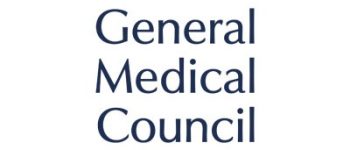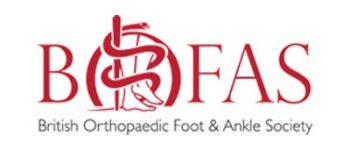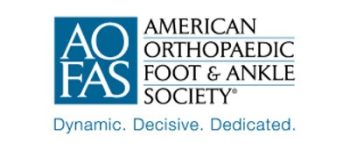ACHILLES TENDON SURGERY
Have you torn your Achilles tendon, and are struggling to get around? Maybe you’ve been told to let it heal in a boot, but you’re worried about getting back to sport?
Minimally invasive Achilles tendon repair surgery may be an option for you.
Services
How Do I Know if I’ve Torn My Achilles?
The Achilles tendon is a strong, broad tendon that attaches your calf muscles (which include the gastrocnemius and soleus muscles), to your heel bone (calcaneum). It’s what enables you to jump, and power off when you’re sprinting.
Sometimes the Achilles tendon can weaken over time through a process known as degeneration, which leads to a condition called tendinopathy. A weakened tendon may be more liable to rupture.
The majority of the patients I see, however, won’t have had tendon symptoms prior to the tear happening. Most of them tear their Achilles whilst doing an explosive movement, e.g. charging for the ball on a tennis court.
If this has ever happened to you, you’ll know it can be an incredibly painful and shocking experience.
How is an Achilles Tear Diagnosed?
There are several signs I will look for when examining you, if we suspect an Achilles tear. One of them is a calf squeeze test, and the other is the angle that your foot rests at when you’re lying face down on the couch.
I may ask you to undergo some diagnostic tests, such as an MRI or ultrasound scan to determine the extent of the injury.
Because I am accredited in ultrasonography, I can perform an ultrasound scan for you whilst in the consulting room if this is necessary.
Is Surgery Always Necessary for an Achilles Tear?
Not everyone needs to have surgery in order to recover from a torn Achilles. A torn Achilles can heal without surgery (which may involve wearing a supportive boot for several weeks, and physiotherapy to strengthen the leg).
However, there have been some meta-analysis studies that show that surgically repairing the Achilles will reduce the risk of it re-rupturing, and so if you play a lot of sports, or have high physical demands on your legs, surgery may be the best decision for you.
Whichever pathway you choose, it is best to start treatment early. That always leads to the best results. I use a specialist boot which has been designed with this injury in mind for both treatment pathways and special rehabilitation regime.
What is Minimally Invasive Achilles Tendon Repair Surgery?
The past, if you tore your Achilles, then surgery to repair it would have involved an incision in the heel area along the entire length of the Achilles. Wound healing complications were much more common as was sural nerve injury resulting in numbness across the outside of the foot. The repair was more prone to failure and stretching out of the tendon and so a different surgical procedure, called a ‘PARS’ repair came about. This has been superceded by the PARS midsubstance speedbridge which connects the calf muscle directly to the heel bone bypassing the tear and allowing it to heel at the correct length.
The speedbridge ‘PARS’ repair (Percutaneous Achilles Repair System) is minimally invasive operation. It enables the ends of the torn tendon to be pulled together in a very secure way, without creating a bumpy tendon. The natural shape of the tendon of restored, and the surgery takes place through a much smaller incision, so wound healing is better.
What is the Recovery Like After Minimally Invasive Achilles Surgery?
After surgery it is possible to go home the same day or the following day. You will be in a temporary plaster cast for 2 weeks. I will then see you, check your incision has healed and have any sutures removed. Now you can get your leg wet and transition to a specially designed boot. You will also be allowed and encourage to fully weight bear at this stage. After a few days, your confidence will build and because the boot will fully protect the repair you will find moving about becoming easier.
At various pre-planned intervals, I will ask you back to clinic to meet and I will adjust the boot to give you more movement. Eventually after a couple of months you will be out of the boot altogether but this is where the hard work for you begins.
Recovering from an achilles tendon rupture isn’t quick and although the tendon can heal quite predictably, the calf muscle needs to gain strength again. This part can take a year to fully see itself through and will require a great deal of motivation from you as well as a good physiotherapist. It is definitely possible to return to your previous sport but this doesn’t happen in everyone.
What if I Ruptured My Achilles Tendon a While Back but Didn’t Realise It at the Time or the Injury Was Missed?
Don’t worry, I can still help you.
I often see patients who didn’t realise they had ruptured their tendon and didn’t seek medical advice as well as patients who did seek medical advice, but their injury was missed.
What has happened here is that because the foot wasn’t placed into the correct position immediately after the rupture, the two ends of the tendon were not brought together and so scar tissue has ended up filling the gap between the tendons. It feels as though the tendon has healed and in a way it has. The problem is it has healed too long. Because of this, the calf muscle with only limited excursion can contract enough to take up the slack in the tendon and so push off strength is weak, you may walk with a limp, suffer calf cramping and can’t be as active as you one were.
A procedure called an FHL transfer can help and this is something I can do using minimally invasive keyhole surgery. Here a tendon used to pull the big toe down is borrowed and inserted into the calcaneus or heel bone. This adds extra power to the achilles tendon and improves push off strength. Because other muscles and tendons move the big toe, most people don’t notice the change.










